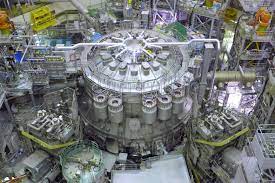Japan has made a monumental step in the advancement of renewable energy by introducing the JT-60SA, currently the largest nuclear fusion reactor in the world. Located in Ibaraki Prefecture, this experimental facility is a critical milestone in the ongoing pursuit of an ideal clean energy source.
Nuclear fusion, the same process that fuels the Sun, is now being replicated on Earth. This development paves the way for a future where energy is not only sustainable but virtually inexhaustible. The JT-60SA is a culmination of decades of scientific research, embodying the aspirations and tireless efforts of numerous scientists since the 1950s.
This revolutionary reactor is a joint venture between Japan and the European Union. Its significance goes beyond energy generation; it represents a major leap towards a future independent of fossil fuel dependency and traditional nuclear energy drawbacks. Nuclear fusion differs from nuclear fission, the latter of which generates long-lasting radioactive waste by splitting atoms. Fusion, on the other hand, combines atoms with minimal waste and no reliance on fossil fuels.
The European Union, a key collaborator in this initiative, highlights the environmental advantages of nuclear fusion. It’s a process free from carbon dioxide emissions, playing a vital role in achieving net zero emissions. Additionally, the safety aspect of nuclear fusion is notable. The reaction ceases immediately if the fuel or power supply is disrupted, eliminating the risk of persistent radioactive waste.
The unveiling of the JT-60SA follows significant progress in the field of nuclear fusion. The Lawrence Livermore National Laboratory in the United States recently achieved a breakthrough: a net energy gain from a nuclear fusion experiment. This process, involving the fusion of light atoms using lasers, released more energy than was initially used, a breakthrough in energy technology.
Physicist Arthur Turrell, although not directly involved, recognizes the significance of this milestone. The achievement of nuclear fusion is a critical turning point, potentially marking the beginning of a new era in energy technology. In an age where the demand for carbon-free energy sources is paramount, this advancement has galvanized global efforts towards practical nuclear fusion.
The JT-60SA, standing six stories high, aims to replicate and possibly exceed the energy gains made in the U.S. experiments. Its foremost objective is to generate a net energy surplus, a challenge that has long been elusive to scientists.
Future prospects for nuclear fusion are even more promising. In France, construction is underway for an even larger fusion reactor, set to start operations in 2025. This facility, alongside JT-60SA, symbolizes the pinnacle of human innovation and the hope for a cleaner, sustainable future. As these reactors become operational, they hold the potential to transform our energy landscape, edging us closer to harnessing the power of the stars for a greener tomorrow.


